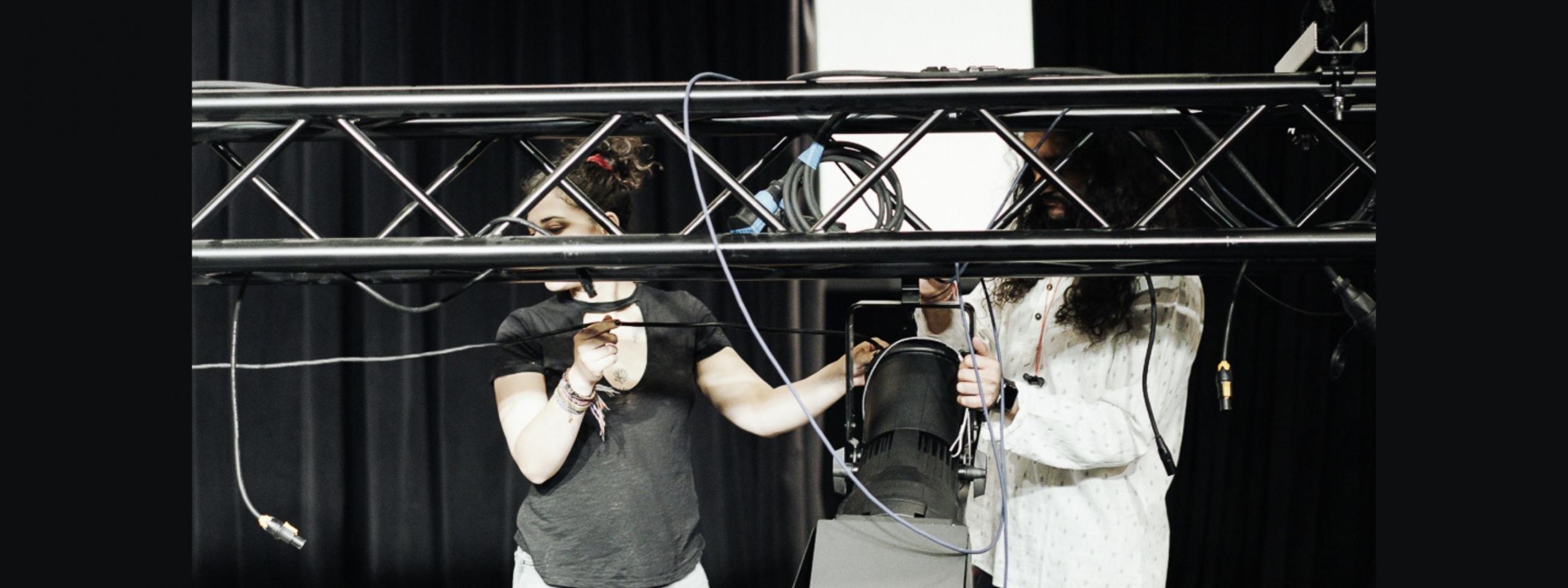VR Film Production: Learning by using what you know

I’m a Kino Eyes graduate, so I had experience working in the film industry of Portugal, the UK, and Estonia. I knew how to pitch a project, manage a set, and export a screener. But I wanted to learn more about how to do the same for VR, so I applied to a Ph.D. researching just that in a program that required a creative project per year.
And then COVID-19 happened.
My first creative project was adapted into a virtual format but as the pandemic got under control, I knew I wanted to produce something in VR.
Assembling the team
I had attended a mixer early on the year so I had a list of names and e-mails of people currently at BFM who were interested in working outside school. If there is something you can learn from this blog, is this: attend the mixers if you can, you never know who you can meet there. The first person to come onboard was Viewfinder student Sofia Steiner, who became our DoP.
I interviewed many producers, some wanted but didn’t have the time, others were going away for the summer, and then it was when luck intervened. My former classmate Dulma Ochir recommended I meet a current KinoEyes producer who was experienced in doing VR. Matheus Pecanha and I clicked from the get-go, and he accepted the job without hesitation.
Matheus used his own network to find the team, while I also searched on my FB groups. We were able to find amazing people from EKA and EAMT to join our project. Truth to be told, aside from Matheus and I, no one had done anything for VR. But if they were great at doing their craft, I knew they could learn to do the same for VR.
Shooting and failing, shooting and learning
My creative project this year was a choral poetry recording. Doing a small project enabled us to shoot twice: once in 16:9 and another time in VR. By shooting twice and doing the analog production first, everyone could find the rhythm and enjoy the challenge that is producing VR.
Not everything went as planned (just like in traditional filmmaking!). Our location had a public event so we couldn’t use smoke machines, stuff was misplaced while packing up exhausted, and we had to sacrifice a couple of shots. BUT WE DID IT! We shot the same video twice with two different formats in only one weekend.
Doing research is like being a test pilot because you use what you know in an experimental way (and there is always the possibility of a crash and burn!). Thanks to what we learned at BFM and our own film experience, we managed to make it to the wrap.
Expanding your film knowledge with VR
If you are interested in this field and you want to try it, I recommend the following:
- Have two different cameras or more than one camera battery, as the current standard VR camera battery lasts only one hour. In my case, I sourced a second VR camera from TalTech Geology Institute.
- Ask your classmates and teachers for advice (and stay in touch!). I try to attend as many meetups and screenings as possible. My classmates and teachers helped me a lot, a special shout-out to Mart for supporting this project.
- Plan to experiment. VR is a new format so make time for things to go off-chart and for camera tests. We tried shooting using a morph suit, changed the lighting, and moved the actors around. We only needed one take, so we used the rest of the time to try to do new things (after all, next year we will shoot my 3rd-year project!).
- Have your own headset and watch VR videos. Now I have an Oculus Quest 2, but I started watching VR productions with a Google Cardboard. I watched a lot of videos and got inspiration from a London production for my second-year project.
- You will spend more than you think, so keep a contingency budget. Things will go wrong in unexpected ways, so be prepared.
If you would like to network with me or ask any questions regarding VR storytelling, feel free to find me on Instagram, Twitter and TikTok as @vrandmovies. I’m also on Facebook and LinkedIn as Ana Falcon.